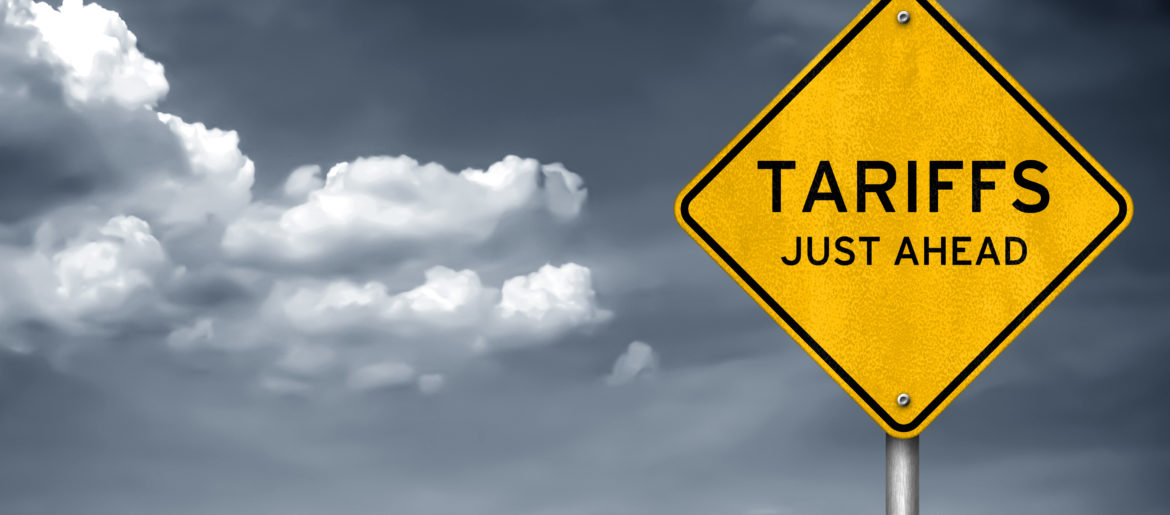
Answering Construction’s Million-Dollar Question: How Are You Dealing With Tariffs’?
Lenders, borrowers and builders have been keeping a close watch on tariffs — and threats of tariffs — on building materials like lumber, steel, granite and marble. Just last month, “import taxes on $200 billion of Chinese goods jumped to 25%,” reports The Associated Press. In the construction industry today, the question on everyone’s mind is, “How will these tariffs impact me and what can I do about it?”
Recently passed tariffs will impact imports of granite, cement, vinyl floor coverings, ceramic tiles, stainless steel, and waferboard. The National Association of Home Builders (NAHB) has put a price tag on the fear of tariffs plaguing the home building industry: $2.5 billion to be paid in duties this year.
Fluctuating Costs of Commodities
Prices of commodities like lumber have climbed and dropped significantly over the past 12 months. Last year on June 1, the Random Lengths Framing Lumber Composite Price was $582 for one thousand board feet. One year later, the price is 45% lower — around $319.
According to a report by SteelBenchmarker, steel has seen quite a ride in the past months as well. On June 10, 2019, the U.S HRB price was $609 — a 33% decrease from $912 on July 9, 2018. As trade negotiations continue, more extreme and frequent price fluctuations will become the new normal.
How the U.S. Freight Market is Floating On
To lower the effect of tariffs imposed last year, buyers put in larger orders ahead of schedule. This has placed a greater demand on freight carriers and led to a backup at major U.S. ports. Come July 1 and August 1, carriers traveling the Trans-Pacific Eastbound (the busiest container trade line for U.S. imports) may be forced to implement a higher than usual General Rate Increase (GRI).
Pedal to the Metal
The next domino to feel the pressure will be the trucking industry. According to a recent article by Yahoo! Finance, “there is a high likelihood that if container rates go up as anticipated through most of the end of 2019, then truckload spot rates will go up as well.”
The article goes on to say, “since new Class 8 truck orders have a lag in production time of 6-8 months, most of this new capacity has entered the truckload market within the last few months. Since this would mean there has been a major increase in overall capacity (supply) in the truckload market, truckload spot rates may not increase nearly as much as they would if there were less capacity on the road.”
In the coming months, the construction industry will feel the effect of increased transportation costs and will be forced to carry some of the weight.
How Builders and Developers are Buckling Up
This roller coaster ride has gotten many builders and developers scrambling about for seatbelts. Speaking with friendly competitors can provide a clearer picture of projected price increases and provide some much-needed control over budgets. An anticipated price increase for one material can be offset by a price decline for another material. Builders can also consider forming a group to buy discounts from suppliers and help reduce risk for everyone involved.
Builders should ask suppliers about shortages and lead time requirements to plan construction project timelines that will take into account foreseeable delays. In this way, juggling costs and deadlines can become easier for contractors, builders, and suppliers.
Working with a fund control company, like QuickDraw Fund Control, can also help everyone maintain a minimum level of control and sanity. Trusting a team of fund control experts can reduce the stress of managing deadlines and budgets, and help builders, contractors and lenders focus on things they can control.
Bracing For Impact
At the moment, an end to tariffs is not in sight. Lenders, suppliers, builders, and contractors need to collaborate on a long-term plan that can withstand the full weight of these tariffs. Where appropriate, prices should be locked-in to keep each link in the supply chain intact. If there is one benefit that tariffs may bring to the construction industry, it may be a renewed sense of commitment to the good of each other.
Sources:
https://www.apnews.com/2de967fddcb643ff8f317cf355ad173a
https://www.latimes.com/business/la-fi-tariffs-consumer-price-effect-20190514-story.html
http://steelbenchmarker.com/files/history.pdf
https://finance.yahoo.com/news/container-rate-increases-expected-trans-143757987.html
